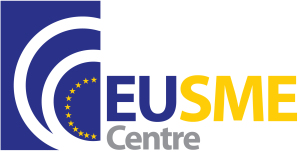 China adopted the new Foreign Investment Industrial Guidance Catalogue (2015 Amendment) (Foreign Investment Catalogue) on 10th April this year.
China adopted the new Foreign Investment Industrial Guidance Catalogue (2015 Amendment) (Foreign Investment Catalogue) on 10th April this year.
Last amended in 2011, the new catalogue changes the conditions and rules for foreign investment in China. Below the EU SME Centre highlight some of the major changes and provides advice for SMEs.
The Foreign Investment Catalogue is a list of industrial sectors, subsectors and services that reflect the Chinese Government’s view on the relevant sectors’ needs for foreign investment. First published in 1995, it is considered a small bible of legal regulation of foreign investment in China.
Encouraged, permitted, restricted and prohibited
The Foreign Investment Catalogue divides economic sectors and activities into three categories – ‘encouraged’, ‘restricted’ and ‘prohibited’. Industries not mentioned in the catalogue are deemed ‘permitted’. Differences among these categories, simply put, lie in the presence or absence of one or both of the following conditions:
- Whether it is possible for the particular business activity in question to establish a 100 per cent foreign-owned enterprise (a wholly foreign-owned enterprise, or WFOE) or whether there is a need to establish a joint venture (JV) with a Chinese partner, and whether the Chinese partner must have a majority stake in the JV.
- How many permits and special licences need to be obtained from the relevant authorising and supervisory bodies, as well as how supportive local authorities will be during establishment and operation of the enterprise.
The amended Foreign Investment Catalogue has opened and released many sectors, with the ‘restricted’ category—originally consisting of 79 items—being reduced by more than half. Despite the overall liberalisation, however, there are still significant limitations in certain sectors such as health and education, with some industries even being moved from ‘restricted’ to ‘prohibited’.
Manufacturing
It is evident that release has taken place across the manufacturing sector. For example, production of manufacturing equipment and tools for routine and special productions, pharmaceutical products, beverages and many others. The exception is the automobile sector (manufacture of motor vehicles), which has been moved from ‘permitted’ to ‘restricted’.
Liberalisation can also be seen in the decrease of:
- areas that require the establishment of a JV;
- activities where the Chinese party previously had to have a controlling stake in the JV; and
- areas that prohibit a WFOE.
Concrete examples include the design and manufacture of transport equipment, such as aircraft engines and parts, equipment for civilian aircraft and yachts, the manufacture of electrical machinery and equipment for the transmission and transfer of electrical energy.
Real estate development and the finance industry
A number of real estate development projects have been moved to the ‘permitted’ category, including large amusement parks, cinemas, villas and golf courses. From the ‘restricted’ category, some non-banking financial institutions have been removed, such as trust companies.
Healthcare and higher education
While many areas of the healthcare sector belong to the ‘encouraged’ category, medical institutions were moved from ‘permitted’ to ‘restricted’.
They can be now established and operated only as a so-called cooperative joint venture (CJV). In this case, the move to the ‘restricted’ category was rather a confirmation of the status quo. Although under the previous Foreign Investment Catalogue it was theoretically possible to establish healthcare facilities as a WFOE, in practice there were not many such cases.
In addition, higher learning institutions and ordinary senior high schools are now allowed to be established only as a CJV with the Chinese partner having a controlling stake.
Advice for SMEs
This amendment is a clear sign of liberalisation in foreign investment in many sectors. However, what is equally important is how the supervising and local authorities will implement its provisions.
The amendment often stipulates the requirement to establish CJVs, which are different to equity JVs, the former being a more uncommon form of JV. The CJV allows for greater flexibility in agreements and arrangements between the JV partners but there is no extensive experience either from the side of the local administration or from the side of investors and Chinese partners.
Despite overall positive changes, SMEs still have to spend time preparing to enter the Chinese market. This means they should gather information on the market, legislation, administrative practices, protection of know-how and other intellectual property rights, carefully choose trusted business partners and be ready for the long road ahead.
If you would like to understand how the changes in 2015 Catalogue will affect your business in China, contact the EU SME Centre legal expert by visiting http://www.eusmecentre.org.cn/expert.
 The EU SME Centre helps EU SMEs prepare to do business in China by providing them with a range of information, advice, training and support services. Established in October 2010, and funded by the European Union, the Centre has entered its second phase which will run until July 2018.
The EU SME Centre helps EU SMEs prepare to do business in China by providing them with a range of information, advice, training and support services. Established in October 2010, and funded by the European Union, the Centre has entered its second phase which will run until July 2018.
The Centre is implemented by a consortium of six partners – the China-Britain Business Council, the Benelux Chamber of Commerce, the China-Italy Chamber of Commerce, the French Chamber of Commerce in China, EUROCHAMBRES, and the European Union Chamber of Commerce in China.
All services are available on the Centre’s website after registration, please visit: www.eusmecentre.org.cn.


Recent Comments